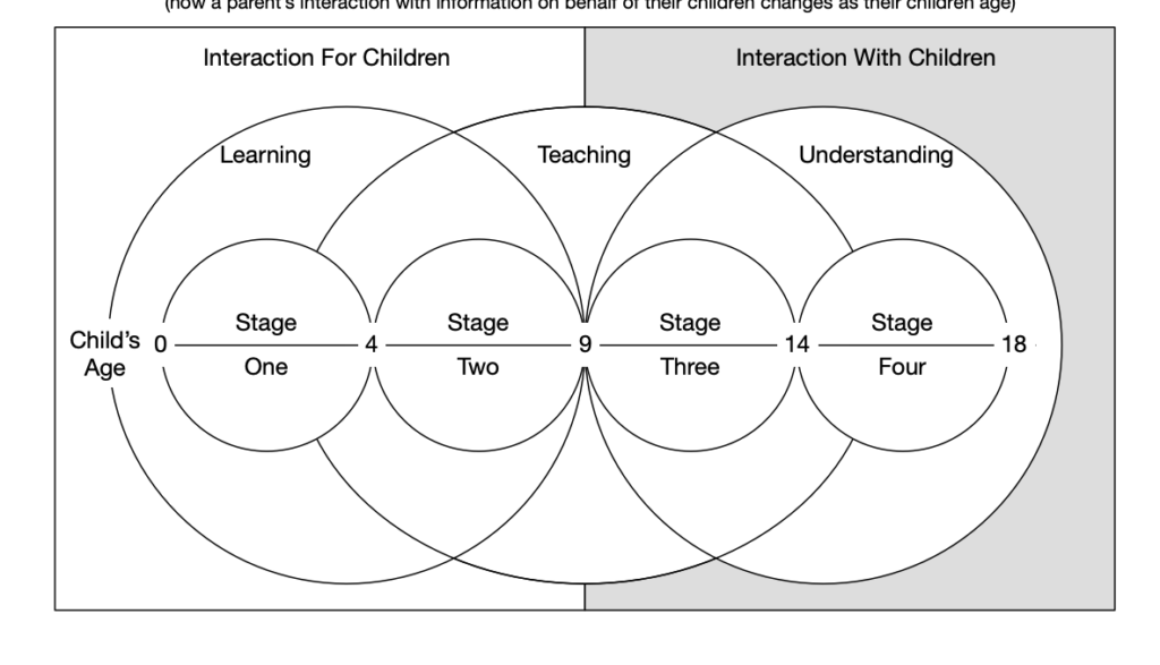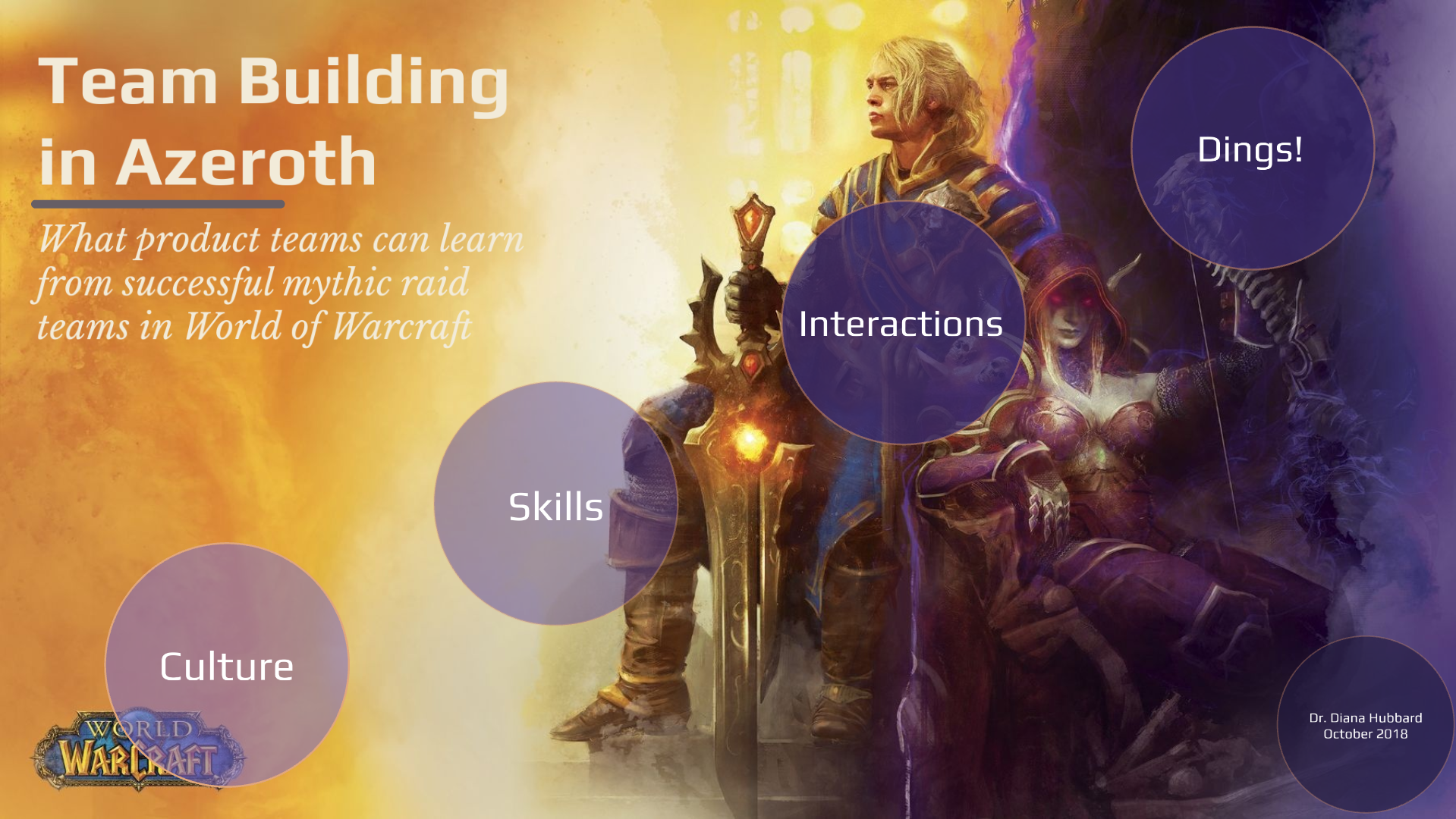Model: The Effect of Parent-Child Interaction on Parental Information Behavior
On the 4th anniversary of the release of my dissertation, and since I haven’t had time to publish to any journals like most academics do (read: 3 kids plus a full time job leaves little time for little else), I’ve made use of my furlough time to do a quick (well academically quick) writeup of the model I developed as a part of my research on parental assessment of video game appropriateness for their children. Some may find it interesting or wish to challenge it or both. I figure anything is better than letting it stagnate in a 200 page dissertation no one is going to read.
Below you will find the simplified model, an explanation of its basic parts, as well as the more developed version below it. For a full explanation with examples from my study, it starts on page 169 of my dissertation. If this has piqued your interest, I have also created a quick writeup of my study (to save you from reading the entire dissertation) and I have published the slides I used in my dissertation defense.
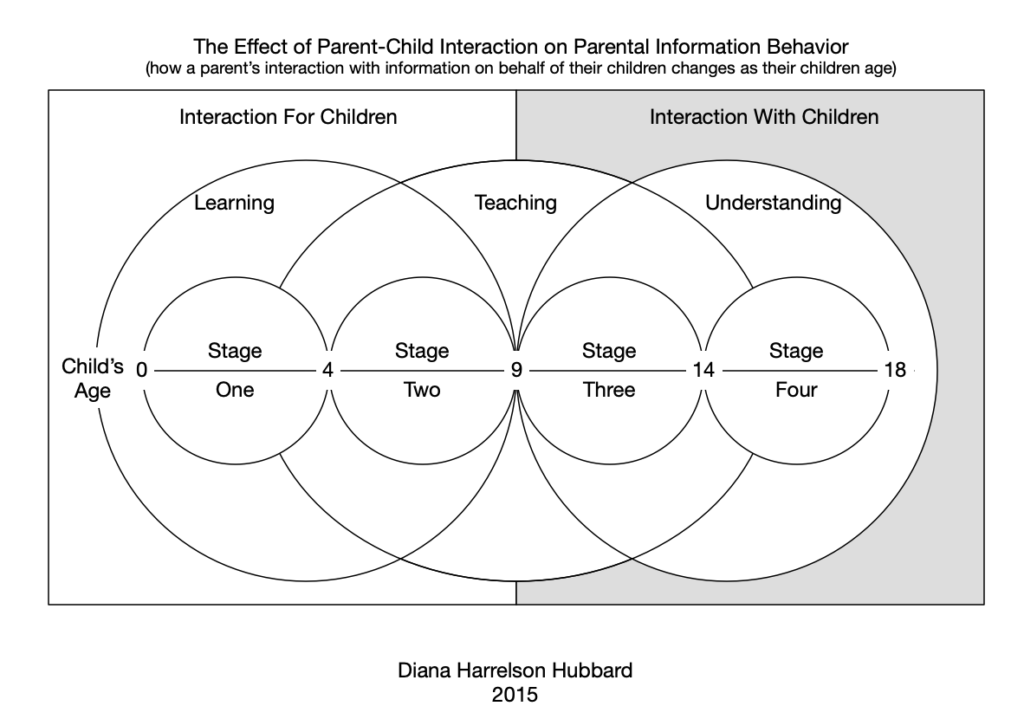
This is simplified from my original version (see below), but I think that makes it easier to utilize for other studies and other types of parental information behavior above and beyond video game assessments.
Breakdown:
The model consists of 4 basic parts.
- The first is the dividing line that separates Interaction For Children and Interaction With Children.
- The second are the intersecting domains of Learning, Teaching, and Understanding
- The third is the age timeline from 0 to 18
- The last are the stages from 1 to 4
Part 1:
Concept – the interactions of parental information behavior and their children change as their children age.
The first major delineation of the model is moving from interacting FOR children to interacting WITH children.
This defining line made itself evident after evaluating how parents of children of different age groups interacted with information when it concerned their children and how *successful that interaction was depending on the type and domain of interaction and the child’s age.
It became evident after evaluating the data that parents who had more conversations with their older children and who made decisions with them had far more success in having open and clear communication about media and its appropriateness than those who decided everything for their children and subjected them to a more authoritarian rule. Those parents who worked with their older children were less worried about their children’s interactions with media than those who preferred to do things for them.
*success is of course subjective here but usually included the lack of a need for discipline or worry because the parent/child relationship was such that there was a clear level of trust or at least an evolving one that they were working on together
Part 2:
Concept – the parental information behavior domains parents interact within, as it concerns their children, changes as their children age.
The second major delineation is broken up into three domain spheres: Learning, Teaching, & Understanding
The Learning domain consists of all of those things parents do to learn what they need in order to parent. This includes the information rush parents go through when they find out they’re expecting as well as interacting with it to fulfill their children’s information needs before their children are able to do so on their own.
The Teaching domain consists of the information behavior as it relates to the parent helping to teach the child whether it be a homeschool situation or supplemental to an external student learning system. It is also about teaching the child how to interact with information on their own. This environment bridges the For children and the With children as the child ages and becomes more independent in their own information behavior.
The Understanding domain is the beginning of a mutual understanding between the child and the parent as the child becomes independent in their information behavior and the parent seeks to understand their child’s new information needs and behaviors.
Part 3:
Concept – tracking parental information behavior as the child ages from 0 to 18.
This is shown via the timeline that cuts through the middle of the model.
Though my research focused on recruiting parents of children 4 to 17, parents discussed their younger and older children as well as their participant children’s behaviors when they were younger. For example, the average age most children in the study started gaming was 3.5. This timeline is most important as it relates to part 4.
Part 4:
Concept – parental information behavior, as it concerns their children, tends to go through 4 stages corresponding to the child’s age. **
- Stage 1 – Birth to Age 4
- Stage 2 – Age 4 to Age 9
- Stage 3 – Age 9 to Age 14
- Stage 4 – Age 14 to Age 18
Stage 1
Birth to Age 4
In this stage the parent’s information behavior as it concerns their children is for their child and focuses primarily on learning about parenting and then transitioning into teaching as the child hits pre-school age.
Stage 2
Age 4 to Age 9
Parental information behavior in this stage is a two pronged approach still on learning, but with an emphasis on teaching. Here, the child starts to become more independent and starts to be able to take on their own information needs, but they tend to still have a lot of needs that only their parent can fulfill. Additionally, due to their young age, they still have a lot of supervision.
Stage 3
Age 9 to Age 14
This is the stage where parents were most concerned in my study. This was for two important reasons. One, children were becoming completely independent in their own information behaviors needing less assistance from their parents. And two, this is the stage where most children start to enter puberty. Here, parents were less concerned with violence and more concerned with sexual content or other improper things like language and drug use.
Stage 4
Age 14 to 18
By the time the child enters high school, or just after, and until they are deemed an adult by culture and society there is an interesting phase where the child can in some cases surpass the parents abilities and understandings when it comes to media and information behavior as it pertains to popular culture and even technical aspects. If a parent has not fully transitioned from For to With and has not moved into wanting to understand what their teen is doing and why, from the teen’s perspective, they will likely lose all control, access to, and input on the teen’s media consumption. This is especially the case the more authoritarian they become and this will cause the teen to hide their information behavior instead of share it (or at least a portion of it) with their parents.
**Side note: There may be differences as to how parents approach these stages with subsequent children and that may also depend on the age gap between their children. Additionally, I did NOT do any research on child information behavior specifically, nor did I focus on any previous research on children and media. My research was focused solely on parents, so this can certainly be added to over time as needed to focus on the needs of children if it makes sense to do so.
Now, if you review my presentation of my dissertation defense, you will see a more detailed version of this model, which I will add below.
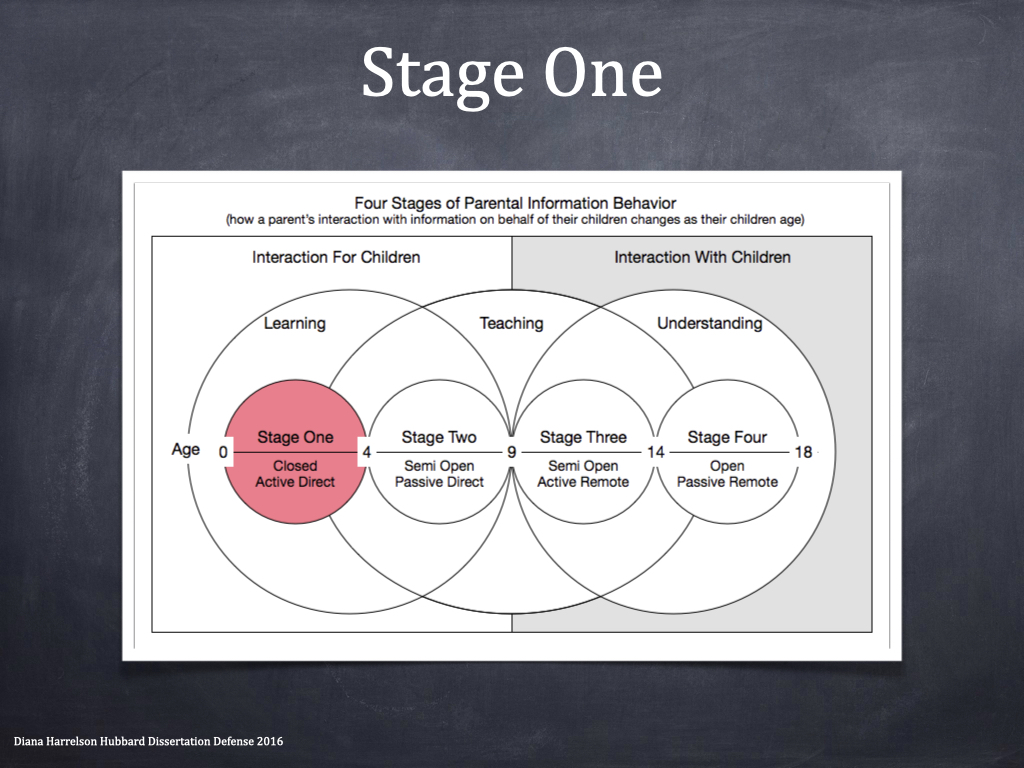
Added details: Any information behavior activities the child has at this stage are actively and directly observed by parent and tend to be on a closed system (no outside access).
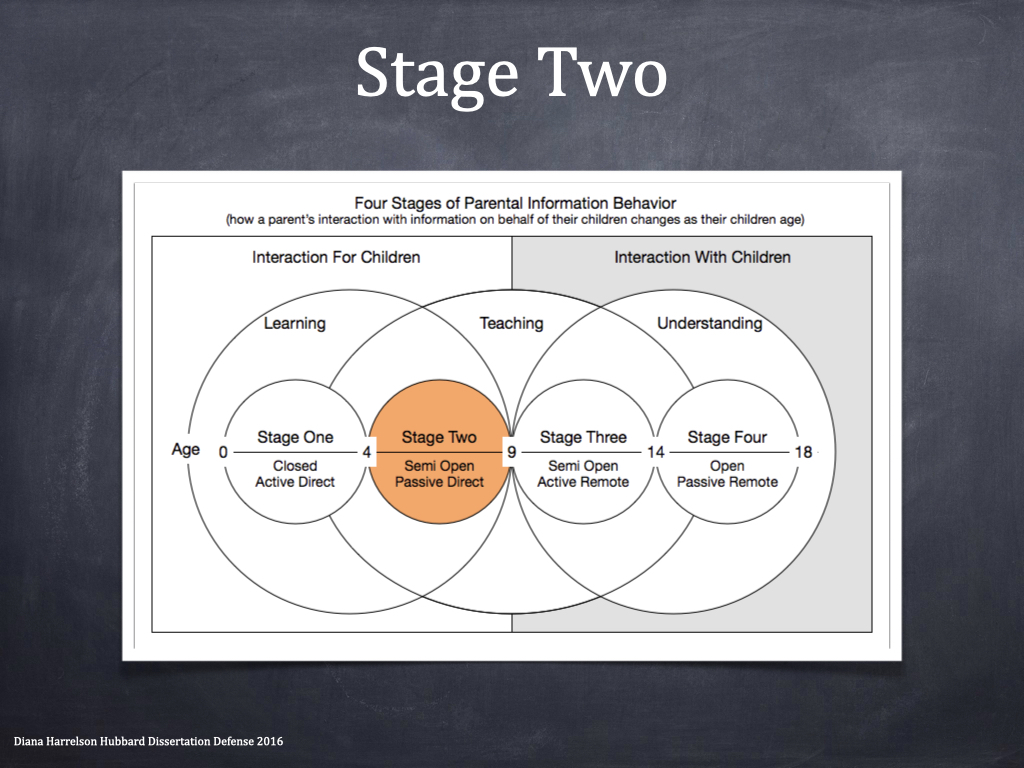
Added detail: At this stage, parents tend to provide their children their own devices, but in a locked down mode, which allows for semi open interactions that can be supervised as needed (passive) but in the presence of their parents (direct). Online access usually comes in the form of white listed programs or school related needs.
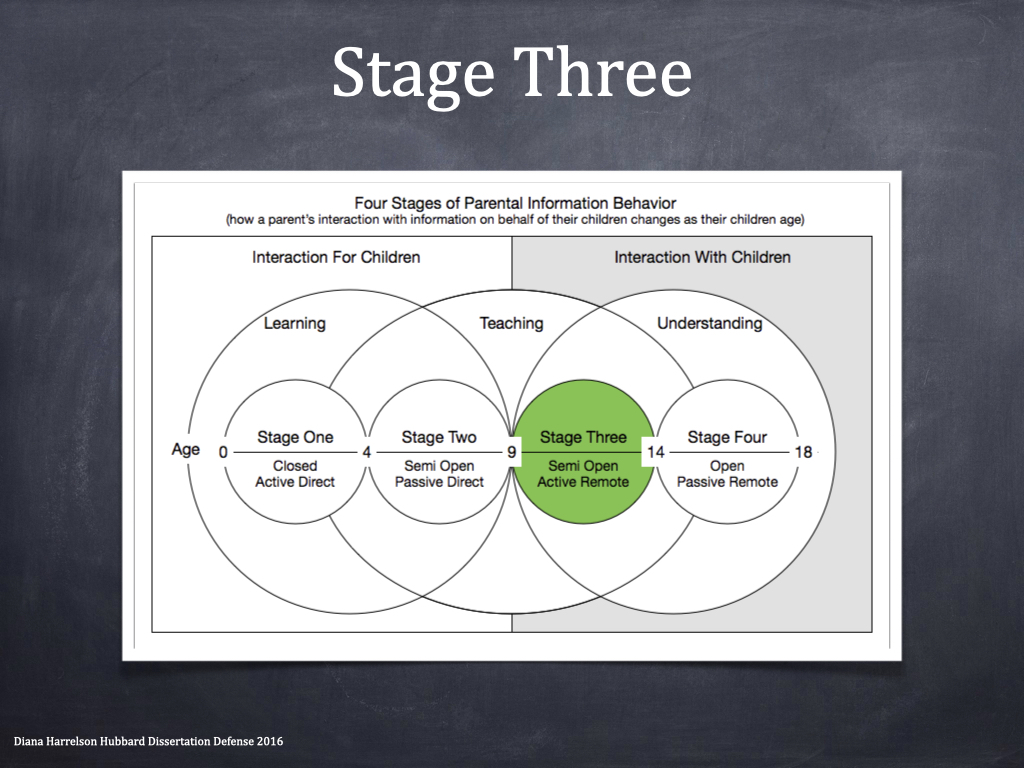
Added Detail: During this stage children become more independent in their media use and information needs as they need less help from their parents in order to do so. While the system may still be only semi open (some lock downs still exist), the child is now able to interact with their media outside of the parents purview. This new independence tends to come with a cost though as the parent becomes more active in paying attention to what their child is doing via remote observation (nanny programs).
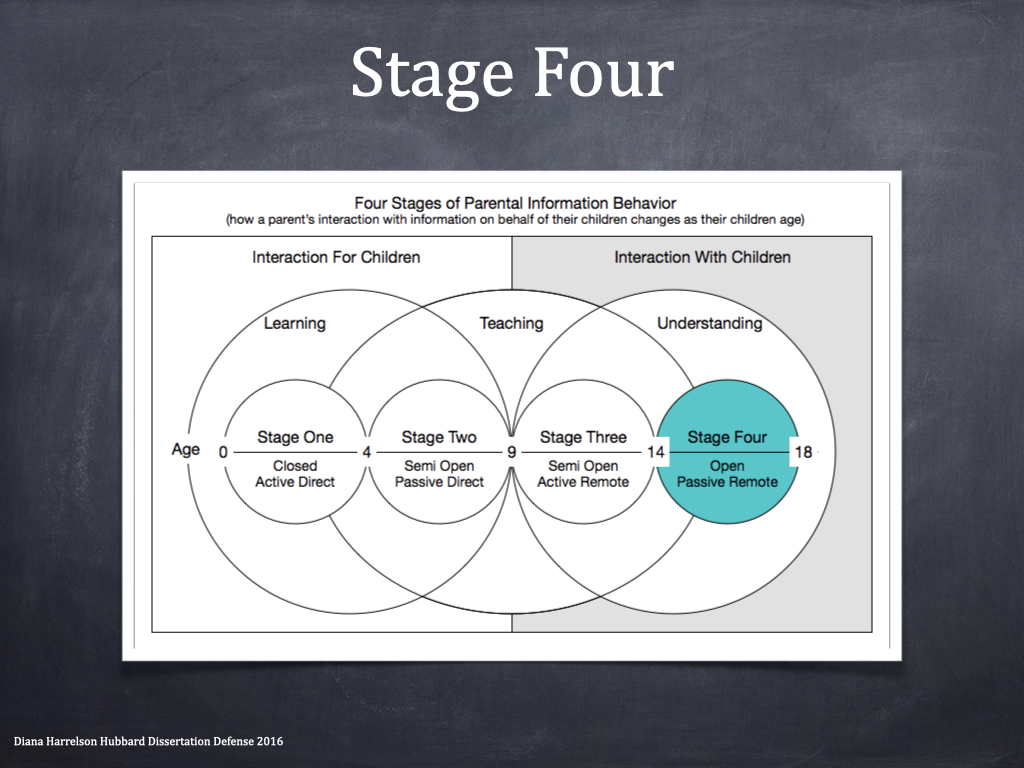
Added Detail: In this stage parents had the least amount of influence or control over the information with which their children interacted, thus their children made most of their information behavior decisions on their own. While parents still made decisions at this stage, children tended to have more influence on the decisions being made. Here there were natural barriers to Mature content which included initial cost and access to a credit card.
Though most teens had open access to interact with information as they pleased in that they were less restricted the older they were, their parents still had control over the access itself and would remove wireless/mobile access when needed (passive monitoring – decisions made here were usually based on grades, attitude etc.) instead of trying to control access to specific things at an application level. This meant it ended up as an all or nothing for the teen. As teens tend to be very protective of their online access, it was a line few wanted to cross.
So? What’s the point?
From my dissertation:
This model was designed to show how interconnected parent-child interactions are with parental information behavior and the effects of this interconnectedness on it. To put it simply, parental information behavior cannot exist without this interconnectedness and it is because of this interconnectedness that it needs to exist as well as persist and change over time.
The examples [see dissertation starting on p. 169] were provided to show how parent-child interactions affect parental behavior on a multitude of levels including information, communication, and decision-making strategies. Additionally, they were to show how this behavior both changes and becomes more complex as children age. Thus, a ratings system that provides the same type of information for every level at every stage may lose the ability to successfully help the parent as their child ages and they reach the later stages, which is arguably when both parents and children need it most.
The major take-away is that children can greatly affect how and why their parents interact with information and it goes well beyond age in the sense of restricting material based on age alone, especially the age ratings that are in place today. Finding ways to educate and assist both parent and child, to provide information in such a way that both can interact with it, and each other, is key to successful family information behavior and any information system that wants to support it.
